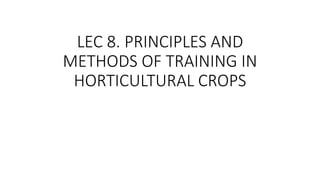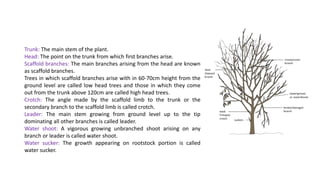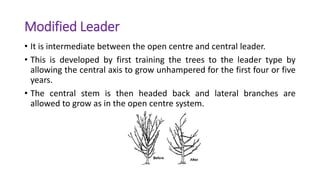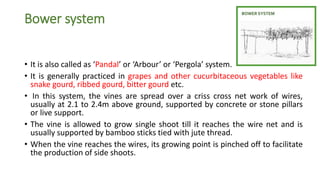This document discusses different tree training systems used in horticulture:
- Central leader system trains trees to have a single, unbranched trunk extending from the ground to the top.
- Open centre system prunes the leader stem to encourage lower scaffold branches and a vase shape.
- Modified leader is intermediate, initially training to a leader then pruning to encourage lateral branching.
It also describes special training practices like the bower, espalier, and kniffin systems used for grapes and other vines.
















